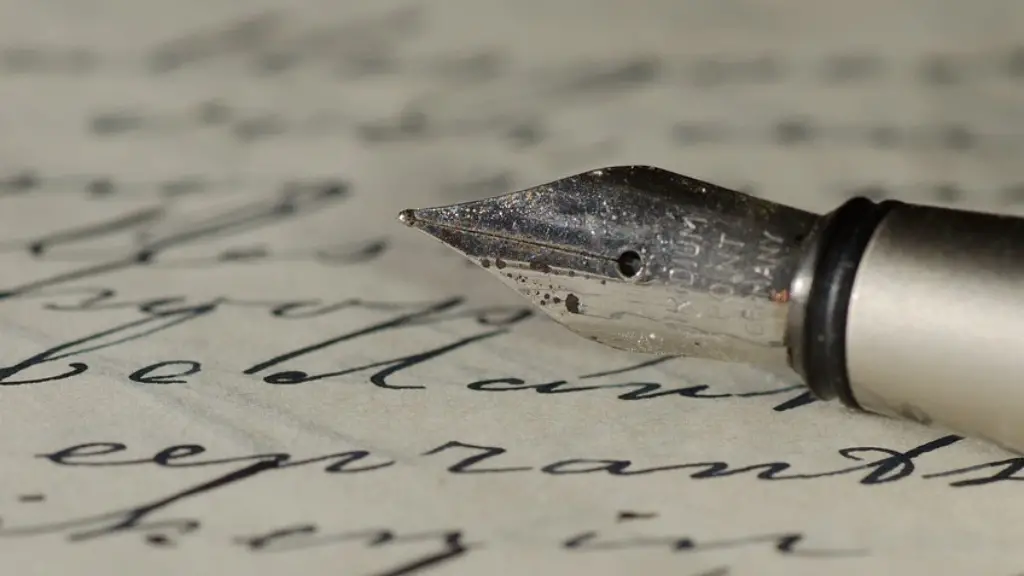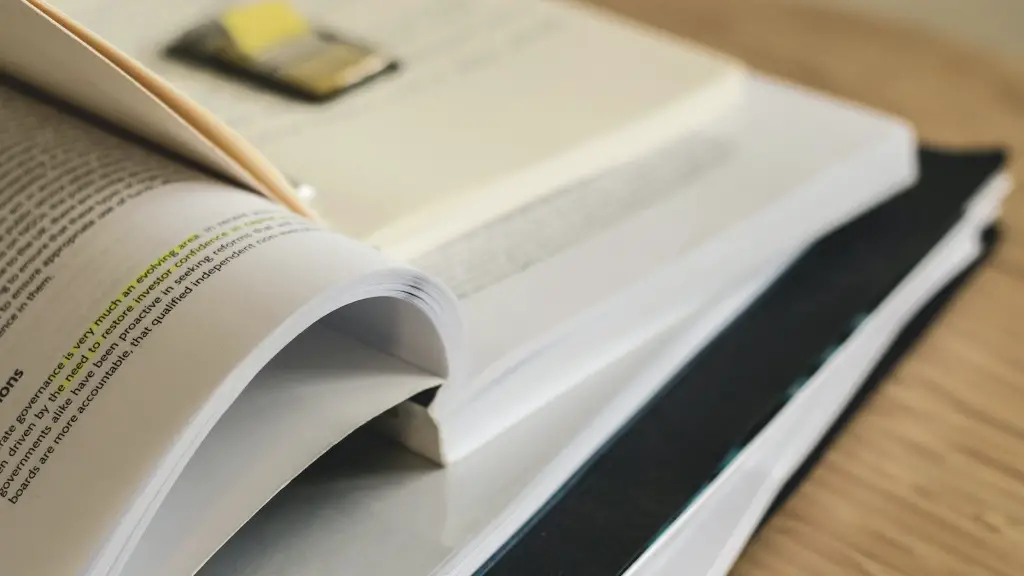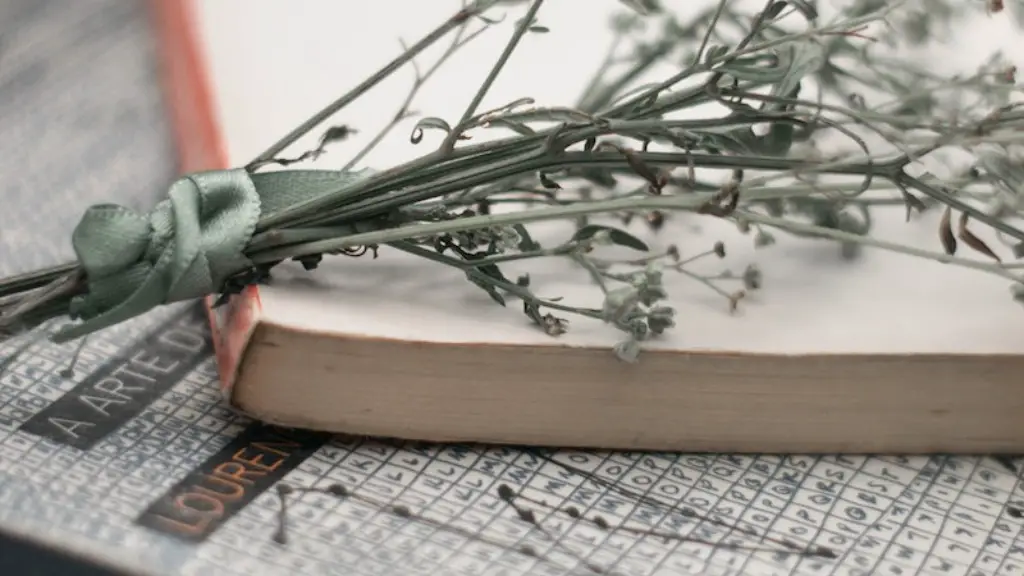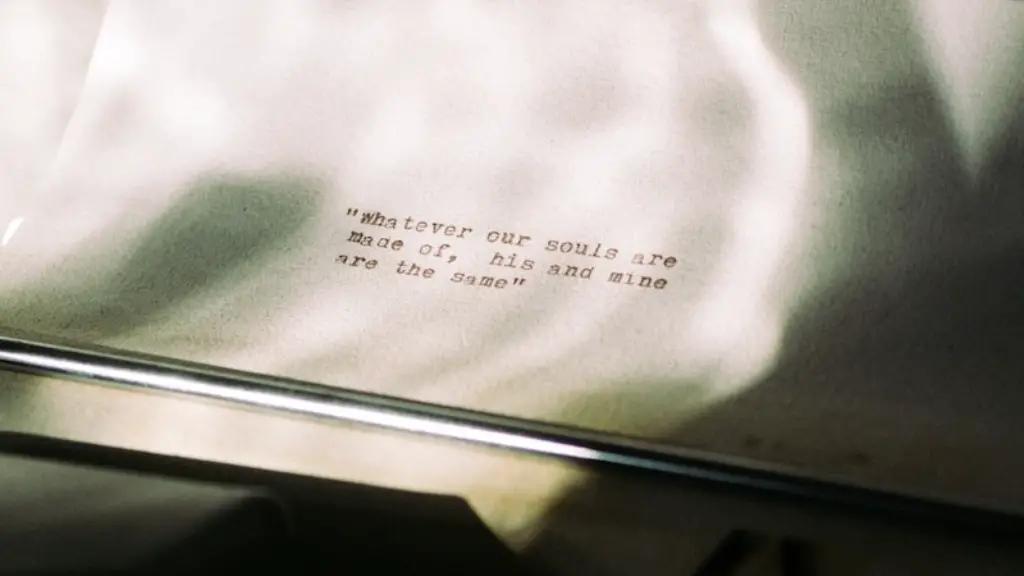When it comes to defining imagery in poetry, its significance is as much as its ambiguity. It has been often referred to as ‘figurative language’ because it creates vivid, evocative images in the readers’ minds. This can be done through the use of words that create the sense of seeing, hearing, touching, tasting, and smelling the poetry. The images created will become a source of interpretation and reflection of all these senses.
In essence, imagery is a powerful tool poets use to address the senses and connect with their readers on a deeper level. It helps to convey the story in a manner that remains with the reader longer and better shows the significance of the poem. It also helps to create a visual picture in readers’ minds that helps to create the environment from which the poem is derived, giving the reader more of an understanding of the poet’s intent and thematic elements. Images in poems can be compared to the imagery in films, where each cut and scene have a different meaning.
More often than not, when using imagery in poetry, poets use metaphors, similes, personification, hyperbole, and paradox to express their meanings. The use of these devices enables the poet to take a single characteristic and utilize it to create a vivid image in the reader’s mind. For example, a poet might write “The lake is like a mirror,” and the reader can automatically imagine a still lake reflecting the sun, clouds, and trees. This is imagery in its most important form. It adds meaning beyond what words can say, taking the readers on a journey of exploration.
As far as exploring the impact of imagery in poetry, the power of the words used transcends the idea of simply being descriptive. It is rather the use of language to create an atmosphere, either of beauty, dread, or gloom. This atmosphere then influences and dictates the poem’s progression and destination. It also offers the reader an opportunity to explore the depths and possibilities of the poem’s theme and subject matter, while offering an emotional resonance to the poem and the poem’s message.
The use of images in poetry is an enthralling aspect of a poet’s craft because it allows the author to be able to communicate the beauty of their story or thoughts in visually impactful ways. It is an important way for poets to translate the great depths of their story and thoughts into a language that will grab the attention of their readers. Imagery, if done properly, can compel the reader to be intrigued and submerge themselves into the poetic landscape of mystery and awe.
Types of Imagery in Poetry
The most basic form of imagery in poetry is visual. Visual imagery contains sensory descriptors, such as colors, shapes, patterns, and textures. It is described as the poem’s attempt to “paint” a picture for the reader. Examples of these include metaphors, personification, and similes. Through the different types of imagery in poetry, authors can weave an intricate web of imagery that stays with the reader long after the poem is read.
Auditory imagery, or sound imagery, works to create a “soundscape” in the reader’s mind. It uses words to mimic sound and create a certain atmosphere. Auditory talent can be used to create either sense of beauty and peace in a poem, or it can be used to forebode and evoke a certain sense of unease or dread.
Olfactory imagery, or smell imagery, is focused on the sense of smell. In the same way that a visual image can transport the reader to a certain place with specific sensations, olfactory imagery does the same. This kind of imagery is used often in evoking mood as a certain scent can widely affect an individual’s mood.
Beyond visual, auditory, and olfactory imagery there is tactile imagery, gustatory imagery, and kinesthetic imagery, each of which work with their own particular sense to create a unique sensory experience for the reader. The more types of imagery a poet uses in any given poem, the more vivid the description and the more evocative the emotion.
Part of Nature in Imagery
Nature exists in both the physical and the intangible worlds, and there’s a timelessness to its presence that allows readers to enjoy its imagery over centuries. Nature is beautiful, wild, and free and these characteristics interface to be captured poetically. Nature is unpredictable and, as such, creates a challenge for the poet to find the perfect words and phrases that describe the moment in the most accurate way while making sure they stay true to the piece.
In addition, nature in imagery helps the reader to interpret the poem. Nature often serves as a metaphor for situations in life, allowing us to compare the natural world to our usual experiences, thereby, giving us insight as to how we should interpret the poem. Poets often employ nature as a tool to convey universal truths about life. For example, the poem “The Wind in the Willows” by Robert Frost explores what can happen when something unexpected affects us in a powerful way.
For centuries, nature has been an ever-present theme in many poetic works due to its graceful, quiet strength, yet still allowing for organic change. Nature provides the perfect terrain for a poet to illustrate how our lives can be unpredictable, yet beautiful. Nature is also used to express our own emotions in a way that is subtle and meaningful. For instance, a poem “The Frog” by Sylvia Plath evokes a sense of sadness and loss, while still encompassing the beauty of a frog’s simple but powerful existence.
Symbolism in Imagery
Symbolism is an integral part of any poem, as it allows the author to impart a deeper meaning on the surface of their words. Symbolism is especially useful when writing about nature, as this allows for a greater understanding of the poem and gives the reader a visual representation of the deeper message. The symbols chosen are often subjective and are open to interpretation, thus giving the poem a sense of mystery and wonder that encourages readers to take an in-depth look into the poem to truly understand it.
Symbolism in imagery can also be used to convey events that may have no visual representation. For instance, in the poem ‘The Cold Within’ by James Patrick Kinney, the imagery of winter helps to compare fortune and misfortune, while the imagery of a roller coaster conveys fear and excitement. In this way, symbolism helps to convey a message that goes beyond the words on the page and creates something unique for readers to contemplate.
The use of symbolism in poetry also allows for a multi-dimensional exploration of the poem’s main theme. Symbols are used to bring layers of meaning to the poem, enabling readers to take a journey of emotion and thought as they travel through the poet’s mind. This allows readers to have a greater understanding of the poem and its message than through simply reading the words on the page.
Symbolism in Literary Devices
Symbolism can be used to enhance any literary device a poet uses to create their imagery. Commonly used literary devices include metaphors, similes, and personification, but symbolism can help make these reference points even more powerful. For example, a poet may use the metaphor of a rose to represent love, but if they also use a symbol of a dove to represent the same thing, they take the metaphor to a whole new level.
Similarly, symbolism can be used to enhance any story being told in a poem. In “The Rime of the Ancient Mariner”, symbols such as the albatross and water provide a deeper interpretation of the story, allowing readers to make connections between the symbols and the events that take place in the poem. These symbols transcend the literal to provide readers with a unique insight into what is happening and what it may mean for them personally.
Symbolism with literary devices also adds dramatic effect to the poem. In “My Last Duchess”, symbols such as a painting of the Duchess, a window, and a white mule are used to create a symbolic representation of the Duke’s power and his desire to control the Duchess. This adds a level of tension in the poem that allows readers to explore the relationships between characters and the societies they inhabit.
Conclusion of Imagery in Poetry Definition
In conclusion, imagery in poetry is all about connecting with readers and enhancing their experience with the poem. It is used to provide a deeper understanding of the poem and its message, while adding atmosphere and emotion. By utilizing various forms of imagery such as visual, auditory, olfactory, and tactile imagery, as well as symbolism and literary devices, poets are able to create a vivid, powerful poem that will stay with the reader long after its read.




